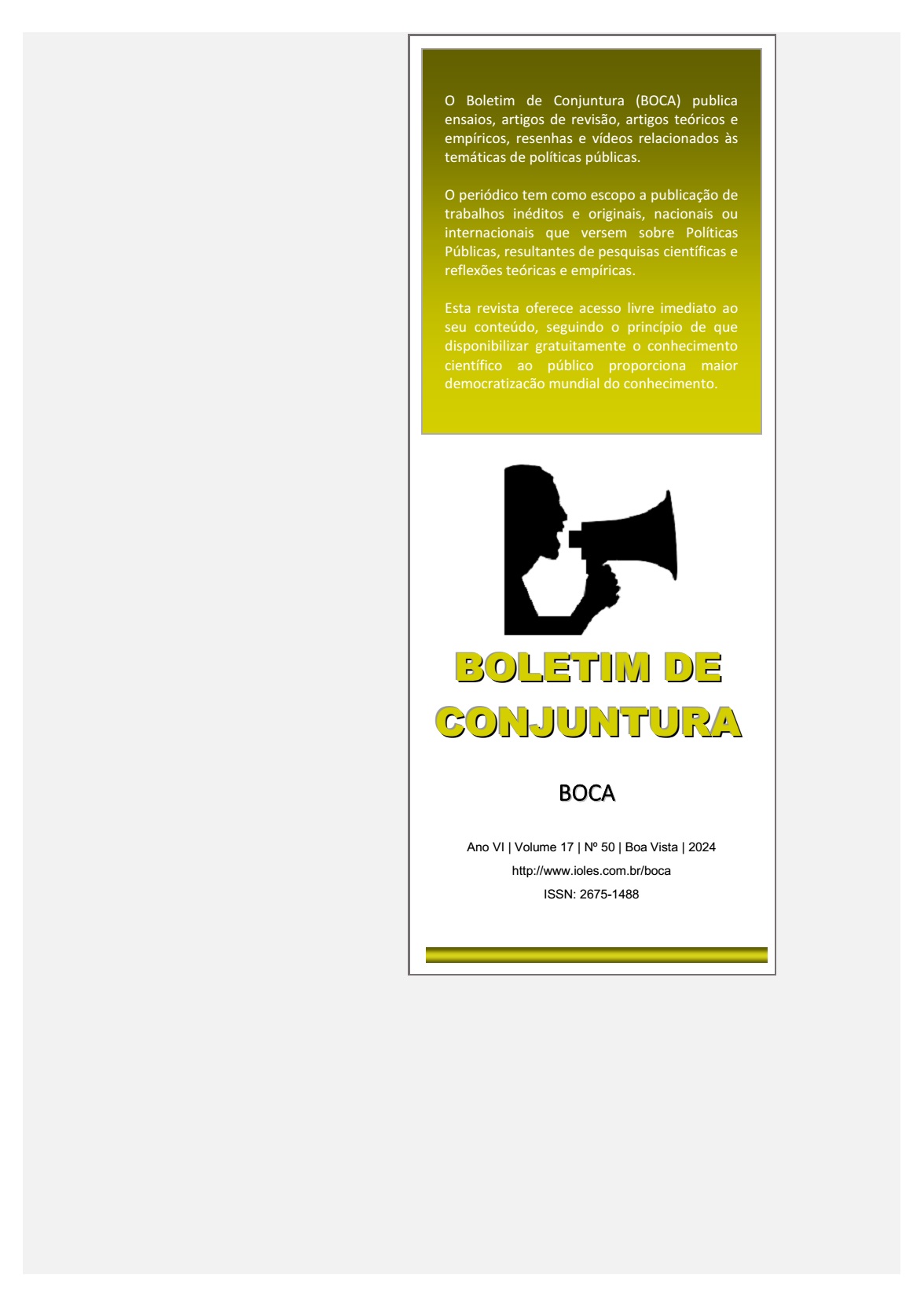ELECTRONIC GOVERNMENT AND CITIZENS’ RIGHT OF ACCESS TO INFORMATION
Main Article Content
Abstract
The research aimed to investigate e-government practices and verify whether the State considers the plurality of Brazilian citizens in the e-government design and implementation processes. The starting point was the hypothesis that services are conceived from a “linear-offerist” perspective, that is, as a showcase of possible services provided by the State, but without considering aspects of physical and cognitive accessibility for potential users. This is an exploratory study, based on theoretical framework and analysis of the portal of 3 institutions that offer services of public interest: Benjamin Constant Institute (IBC), Special Courts of the Court of Justice of the State of Rio de Janeiro (TJRJ) and the City Hall of the city of Rio de Janeiro (PMRJ). The analysis of the portals included: technical usability evaluation, in accordance with Nielsen's Heuristics and the principles of Universal Design; the evaluation from the perspective of its users, based on the performance of suggested tasks and a netnographic study on the ways in which users interact with their respective institutions in the digital environment. The results of the technical analysis show that institutions only partially meet digital accessibility requirements; in the analysis by users, the best evaluated institution (PMRJ) received only 57.5% approval, followed by IBC (54.8%) and TJRJ (33.3%); and in the netnographic analysis, low interaction between institutions and service users was found. The hypothesis was confirmed and it is suggested that public institutions review the bases underlying the conception of e-gov services, including correction of observed problems, and potential user`s studies, to make digital solutions more understandable and enable greater interaction with citizens.
Article Details

This work is licensed under a Creative Commons Attribution 4.0 International License.
Copyright (c). Conjuncture Bulletin (BOCA)
This work is licensed under a Creative Commons Attribution 4.0 International License.
References
BRASIL. Acesso à informação pública: uma introdução à lei 12.527, de 18 de novembro de 2011. Brasília: Controladoria Geral da União, 2011. Disponível em: . Acesso em:11/08/2023.
BRASIL. eMAG Modelo de Acessibilidade em Governo Eletrônico. Brasília: Ministério do Planejamento, Orçamento e Gestão, 2014. Disponível em: . Acesso em:11/08/2023.
BRASIL. Manual da Lei de Acesso à Informação para Estados e Municípios. Brasília: Controladoria Geral da União, 2013. Disponível em: . Acesso em:11/08/2023.
BRASIL. Proposta de política de governo eletrônico para o Poder Executivo Federal. Brasília: ENAP, 2000. Disponível em: . Acesso em:11/08/2023.
BRASIL. Cartilha de acessibilidade na Web: legislação brasileira e diretrizes sobre acessibilidade na Web. São Paulo: Comitê Gestor da Internet no Brasil, 2015. Disponível em: . Acesso em: 11/04/2023.
BRASIL. Constituição da República Federativa do Brasil. Brasília: Planalto, 1988. Disponível em: . Acesso em:11/08/2023.
BRASIL. Lei n. 12.527, de 18 de novembro de 2011. Brasília: Planalto, 2011. Disponível em: . Acesso em: 21/05/2023.
CAPURRO, R. “Epistemologia e Ciência da Informação”. Anais do V Encontro Nacional de Pesquisa em Ciência da Informação. Belo Horizonte: UFMG, 2003.
COMITÊ GESTOR DA INTERNET NO BRASIL. TIC Kids Online Brasil: pesquisa sobre o uso da internet por crianças e adolescentes no Brasil. São Paulo: CGI.br, 2019.
FUJINO, A. “Acessibilidade informacional de PCD no contexto da lei de acesso à informação: desafios para estudo de usuários”. Informação em Pauta, vol. 2, 2017.
GANDRA, T. K.; DUARTE, A. B. S. “Interlocuções entre a análise de domínio e os estudos de usuários da informação: contribuições para uma abordagem sociocognitiva”. Anais do XIV Encontro Nacional de Pesquisa em Ciência da Informação. Florianópolis: ENANCIB, 2013.
HJARVARD, S. “Midiatização: conceituando a mudança social e cultural”. Matrizes, vol. 8, n. 1, 2014.
IBGE - Instituto Brasileiro de Geografia E Estatística. Censo demográfico de 2010. Brasília: IBGE, 2010. Disponível em: . Acesso em: 22/01/2021.
KOZINETS, R. V. Netnografia: realizando pesquisa etnográfica online. Porto Alegre: Editora Penso, 2014
MORAES, D. O concreto e o virtual: mídia, cultura e tecnologia. Rio de Janeiro: Editora DP&A, 2001.
NIELSEN, J. Usability engineering. San Francisco: Morgan Kaufmann Publishers, 1993.
NIELSEN, J.; LORANGER, H. Usabilidade na web: projetando websites com qualidade. São Paulo: Editora Elsevier, 2007.
SÁNCHEZ-ORTIZ, A.; RAMAPRASAD, A.; SYN, T. “Comparative Analysis of E-Gov Services: An Ontology-Based Approach”. In: ALCAIDE MUÑOZ, L.; RODRÍGUEZ BOLÍVAR, M. (eds.). International E-Government Development. Cham: Palgrave Macmillan, 2018.
SASSAKI, R. K. Inclusão: construindo uma sociedade para todos. Rio de Janeiro: Editora WVA, 2010.
STROPARO, T. R. “Smart cities, mobilidade urbana e envelhecimento humano em tempos de pandemia: exclusão e isolamento”. Boletim de Conjuntura (BOCA), vol. 5, n. 14, 2021.
TABORDA, L. E. et al. Acessibilidade da pessoa idosa a serviços públicos nas plataformas digitais no município de ponta grossa-pr. Boletim de Conjuntura (BOCA), vol. 14, n. 42, 2023.
TORRES, E. F.; MAZZONI, A. A.; ALVES, J. B. M. “A acessibilidade à informação no espaço digital”. Revista Ciência da Informação, vol. 31, n. 3, 2002.
XAVIER, J. F. B. Governo eletrônico: o cidadão e o direito de acesso à informação (Tese de Doutorado em Ciência da Informação). São Paulo: USP, 2022.


